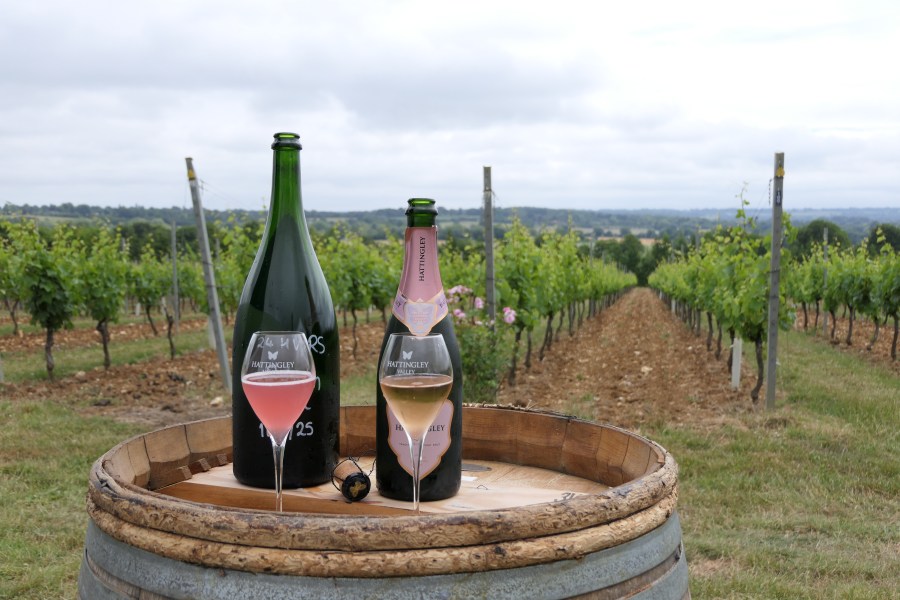Hattingley Valley is exceptional. For over a decade this family owned vineyard and winery located near the Georgian Town of Alresford has produced wines with a singular focus on quality. In celebration of English Wine week, Hattingley Valley invited Vineyard Magazine and other members of the wine press to an in depth behind the scenes look at the vineyard and winery.
Most vineyards in the UK are in a rural location including Hattingley Valley. With collection at the local train station by Hattingley partner company global Chaffeur service Blacklane it was possible to effortlessly travel to the vineyard without once thinking about having to drive. Hattingley and Blacklane have teamed to offer bespoke transport solutions for all those wishing to experience the detailed tour and tasting experience with door to door service available through the Hattingley Valley website.
Opening the proceedings Simon Robinson, the owner of Hattingley Valley, explained how vines first came to be planted at the Hampshire site. Whilst looking for a diversification project for the mixed farming enterprise that comprises over 1,000 acres Simon candidly explained some of the reasons behind the choice of vines and wines as a diversification enterprise. “It is a new and growing area within the agricultural sector and for a farmer it was different to a normal diversification project. Wine is also a product that keeps which is a very attractive proposition within the agricultural sector and finally there are various routes to market for wine including export.” According to Simon it was a conversation with Oz Clarke that really put vines in focus at Hattingley Valley.
There is a strong focus on sparkling wines at Hattingley Valley. “We want to maintain focus on what we are good at,” said Simon. Speaking about the price of English sparkling wines Simon highlighted that yields are much lower in the UK than other parts of the world with 3 tonnes an acre a respectable yield in England compared with figures of 6.7 tonnes in Provence and possibly more than 13 tonnes in Australia but he was quick to point out that “English Sparkling Wines made in the traditional method are very good value for money with a very high quality premium product.”
Vines were planted at Hattingley Valley in 2008 and there are 7.2 hectares at the site but Hattingley are also supplied with fruit from contract growers across the counties of Suffolk, Essex, Kent, Oxfordshire and of course Hampshire. By forging close relationships with growers in different regions using long term contract growing agreements Hattingley Valley are able to protect against regional variations that might occur. For example, 2022 has been seen as a bumper year for many producers but some vineyards in Essex and Suffolk suffered drought in 2022 which decreased yields significantly. Some parts of Suffolk had as little as 4mm of rain in August 2022. Hattingley Valley has worked hard to mitigate for such vintage variations and to ensure that quality is always exceptionally high. “The best marketing tool we have is what is in the bottle,” said Simon with a confidence that was inspiring.
There are four presses at Hattingley able to take 13.7 tonnes of fruit in one load, allowing the winery to process a maximum of 39 tonnes a day at harvest. Since fruit is coming in from multiple locations and as Hattingley are also contract winemakers for a small number of like-minded vineyards, this raised questions about the logistics of how this works. “With a great deal of diplomacy and a lot of constant communication,” was the pragmatic answer from Rob MacCulloch MW, Head Winemaker at Hattingley Valley.
With 10 different vineyards supplying fruit, Hattingley Valley are well placed to build complexity into the award winning wines. This starts with the 100 stainless steel tanks that allow the juice to be kept separate and allows a huge variety of options for Rob MacCulloch MW. Rob, who has made wine in Australia, New Zealand as well as Europe explained that acidity is the biggest factor in winemaking in England and Wales. “The acidity levels we see are well beyond what would be experienced in places like Ausralia and New Zealand. For example, the Chardonnay comes into the winery with 16g of titratable acidity which is double what would be found in Sauvingnon Blanc in New Zealand after full malolactic conversion we could still finish with 11g and a pH of 2.8,” Rob explained.
“We have a philosophy to master the blend,” said Simon. With this philosophy in mind every year, each harvest is examined in detail to find the best way to treat the specific grapes. The use of malolactic conversion is a perfect example of this adaptable winemaking. “In 2023 we had a wet summer which produced soft flavours and soft acids,” said Rob. As a result, only 5% of the wine went through the process of malolactic conversion in order to prevent the fruit flavours being overpowered but in 2024, 70% of the wine went through the process. Rob was willing to talk about other winemaking choices such as the use of red wine yeast for the chardonnay grapes with Burgundian yeast the choice for the Pinot Noir. “Blend theory takes one month at Hattingley Valley,” said Rob with pride and all the wines in the Hattingley Valley portfolio benefit from the same level of dedication. “Our hallmark wine is the Hattingley Reserve but just because it is our most available wine does not mean it is any less cared for,” Rob explained.
Winemaking in England and Wales is still a very new industry and whilst the wines produced are consistently winning awards and gaining in prestige the area in production is small compared to the global industry. Rob pointed out that this can cause issues for wineries in sourcing equipment because some companies are not set up to supply the smaller market of England and Wales. There are also positives from this position on the global stage. Tradition can limit the collective wine imagination whereas “we don’t know what we can achieve and what we are not supposed to do,” Simon explained with a smile.
In the winery Rob explained that in the future Hattingley Valley may trial wild ferment at tirage. “It will add stress and risk, but it is a trial we want to undertake because we believe it improves mouthfeel and adds complexity. There has been some evidence of this, but we need to see how it will work in the bottle,” he said.
In another example of imaginative winemaking the Hattingley portfolio also includes Entice, a dessert wine that involves the grapes being hand harvested and then frozen before pressing. Made from 100% Bacchus grapes and involving a complex production method this wine is produced in very limited batches. “Every year I ask the winemakers if they can make two batches of this wine and every year the answer is no,” added Simon with a smile.
Entice is a unique dessert wine with a balanced flavour profile offering notes of honeysuckle but also citrus. The suggested pairings include blue cheese or summer pudding. It is an incredibly popular wine and is often sold out. It is one of those wines that has a dedicated following of admirers. “We support employees who want to go overseas to experience different techniques and harvests,” said Simon. One such trip working in New Zealand was the initial inspiration for the Entice dessert wine.
In the vineyard Rob explained that the vines sit 40cm above the chalk seam for which Hampshire sparkling wines have become famous. There is also a significant flint content in the soil. Not only is the flint a problem in cultivation with the use of machines but these so called “Hampshire Diamonds” have even caused a stubble fire on the farm. The ever-prepared team at Hattingley have therefore undertaken a smoke tank test just in case lightening does strike twice.
The vineyard sits 190m above sea level with a cool breeze and has suffered very little from frost damage. There has not been any significant predation of grapes from badgers but in 2023 and 2024 the later Chardonnay grapes suffered some bird damage “this was probably because the wet weather had affected the natural food sources for the birds and they turned to the grapes. We will wait and see if the birds return to the hedgrerows in 2025.” Hattingley is surrounded by fruitful hedgerows and Rob has a working theory that this may be acting as a reservoir for fungal infection in the vineyard.
One of the ways the vineyard measures the disease pressure in the vineyard is looking at a part of the site that suffered bomb damage. During World War II it was common for bombs to be off loaded over areas that were close to the coast before planes returned to base. One of these craters sits in the vineyard and “where the lower lying land is slightly more sheltered it is a good place to monitor disease,” said Simon.
Rob has been at Hattingley three years and “Chardonnay has been the highlight each year,” he said. There are four clones of Chardonnay at Hattingley Valley. 131 has a citrus flavour profile with clone 76 lime acid driven in contrast. The 2025 flowering has been good but due to poor carry over from the 2024 the inflorescence have not been large. “Next year looks very promising,” said Rob.
Rob explained that the best performing Chardonnay clone on the site in Hampshire is 121 but the clone 95 on 125 rootstock in the free draining sandy/clay soil in Kent out performs the 95 Clone on SO4 rootstock in Hampshire. In Hampshire the Chardonnay is picked in late October and is the last fruit into the winery. In a rare glimpse into the mind of a winemaker Rob explained that his first taste of a tank is done blind so that he can really experience what is happening and then he looks to the numbers behind that initial first taste. The Chardonnay has peak fermentation at 16 degrees and Rob explained that he feels the taille can be a very valuable blending element for English wine. Rob is clearly passionate about English wines, describing their texture as “dancing over the tongue” he clearly emphasises that the wines from England require winemakers to work differently and with different varieties.
Pinot Meunier was a new variety for Rob to work with. With a peak ferment of 17 degrees Rob explained that the Meunier adds an earthy flavour to the blend and that the wine is lees stirred before blending which adds complexity to the wine.
“The UK is globally a big market for wine, so we have a big domestic market,” said Simon. Hattingley is also a brand with a growing international presence. The export market was one of the original reasons Simon looked to vines and wines as a diversification project. “About 8% of our total crush is exported,” said Chris Ungar Sales and Marketing Director at Hattingley Valley.
According to figures shared by Yvette Van Der Merwe, President of the OIV, global sparkling wine consumption has increased by 108% since 2002 with consumers willing to pay more for a premium product. Hattingley Valley is perfectly placed to capitalise on these global trends. “Norway is one of our markets and our brand is becoming more recognisable in other overseas markets,” said Chris. “We are the largest UK exporter to Norway and the USA and Japan will be big export markets,” added Simon. This ever-increasing brand awareness means that opportunities are constantly evolving for Hattingley Valley.
Chris is also part of the board at WineGB and Chair of the Wines of Great Britain Export Council. This group consists of eight producers ranging in size, “we are a working group for anyone who shows interest in the export market and we are really conscious of new producers who may want to venture into the export market,” he said with a warm smile. Chris pointed out that whilst attending the 2025 Prowein event in Germany, there was significant awareness of English Sparkling Wine. “The event was good for active development but there was also incoming interest and enquiries,” he said.
John Oldham the 17th Century poet once said “All your future lies beneath your hat.” Beneath the numerous awards and accolades that the Hattingley Valley wines have received over the years lies a place of passion where there is a confidence that every bottle that is produced is representative of the hardest work and the utmost effort. From the vineyard and the winery through to the marketing team there is also a sense that the Hattingley Valley story is an open book. A book which the team at Hattingley Valley want to share.
Hattingley have actively worked to invite everyone to join in the story of wine by dispelling any sense that wine is a mystery to be understood only by the elite. There is a desire to impress every single person who opens a bottle be it the Hattingley Reserve, Kings Cuveé or dessert wine Entice. The ethos is quite literally enticing.
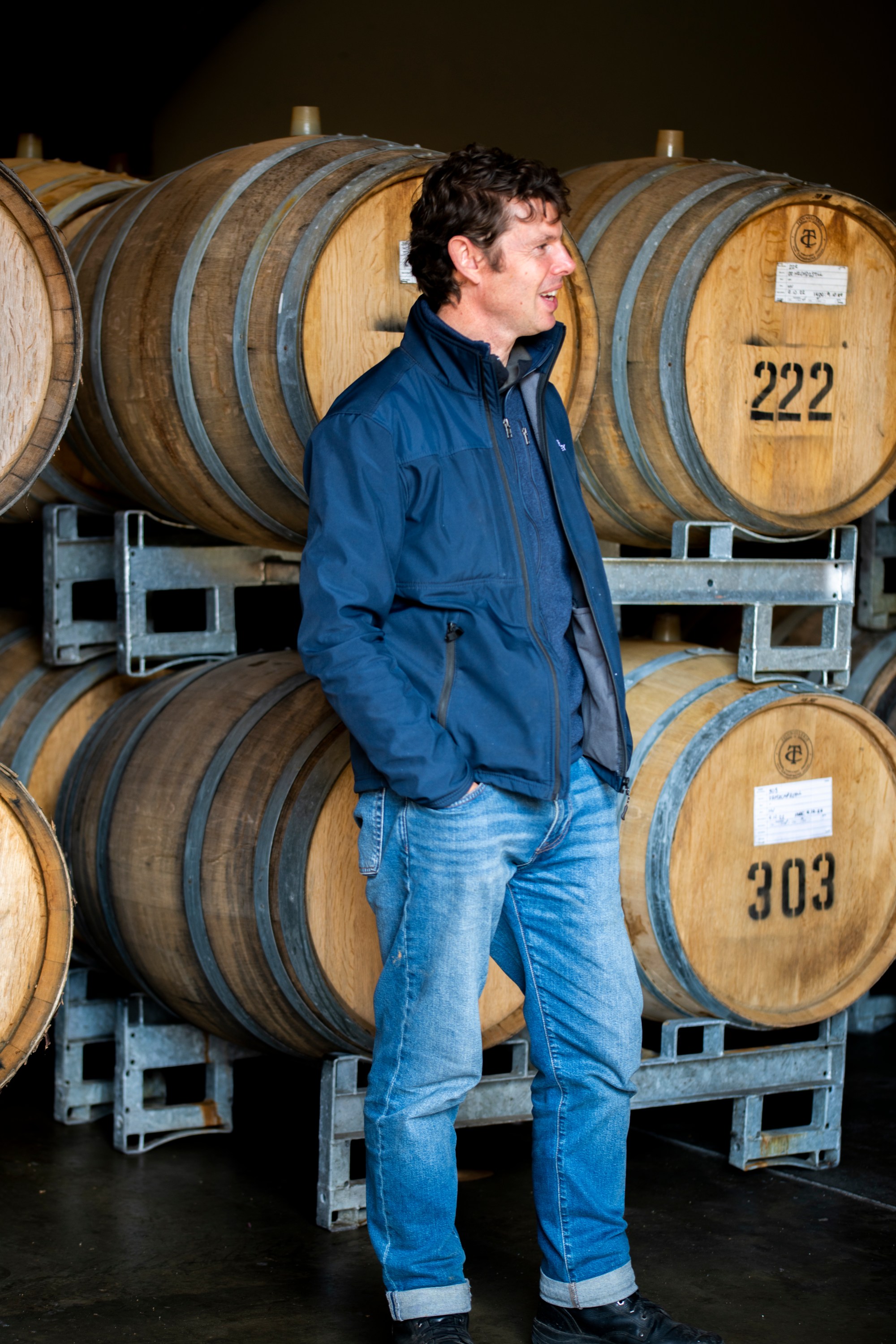
Rob MacCulloch
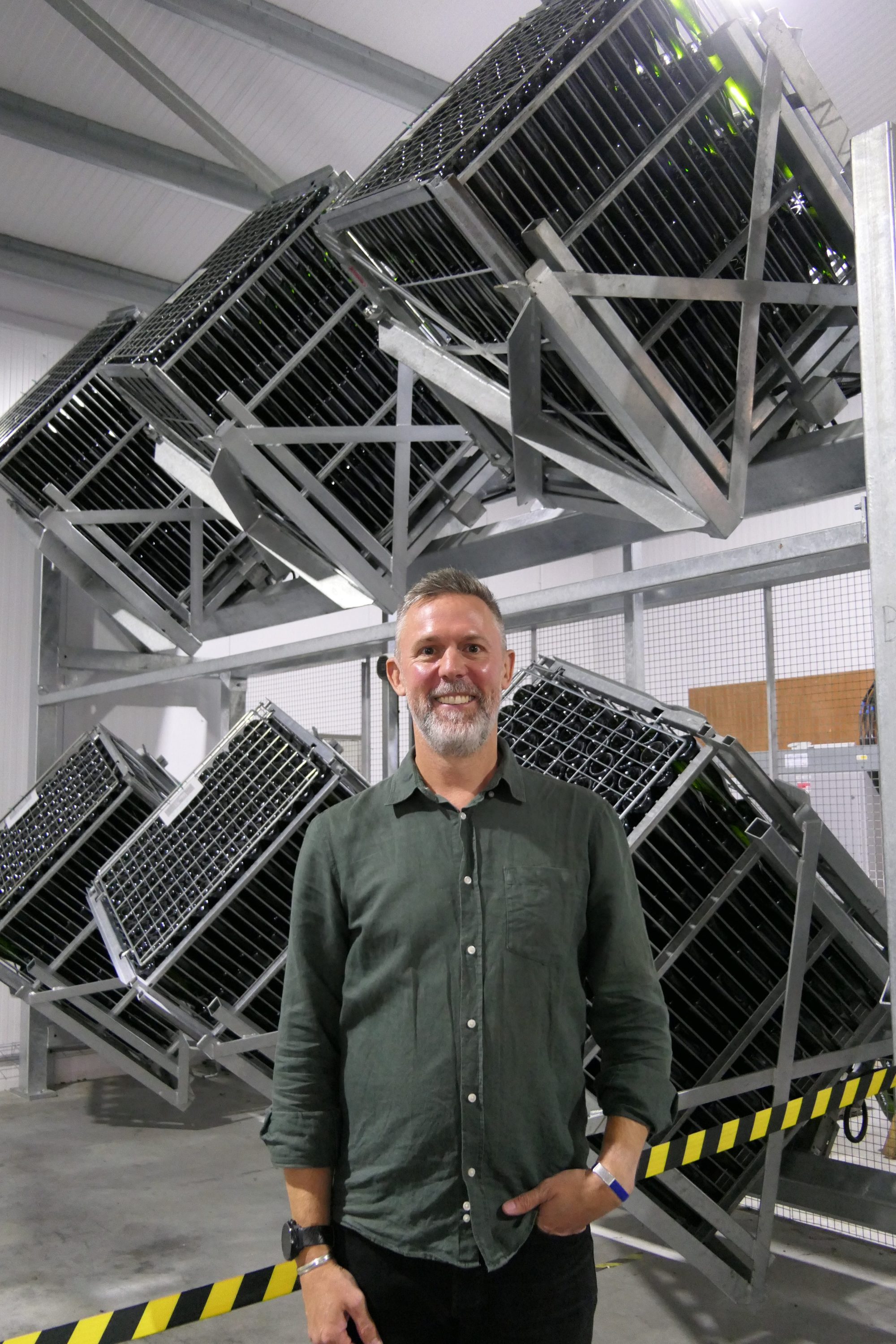
Chris Ungar
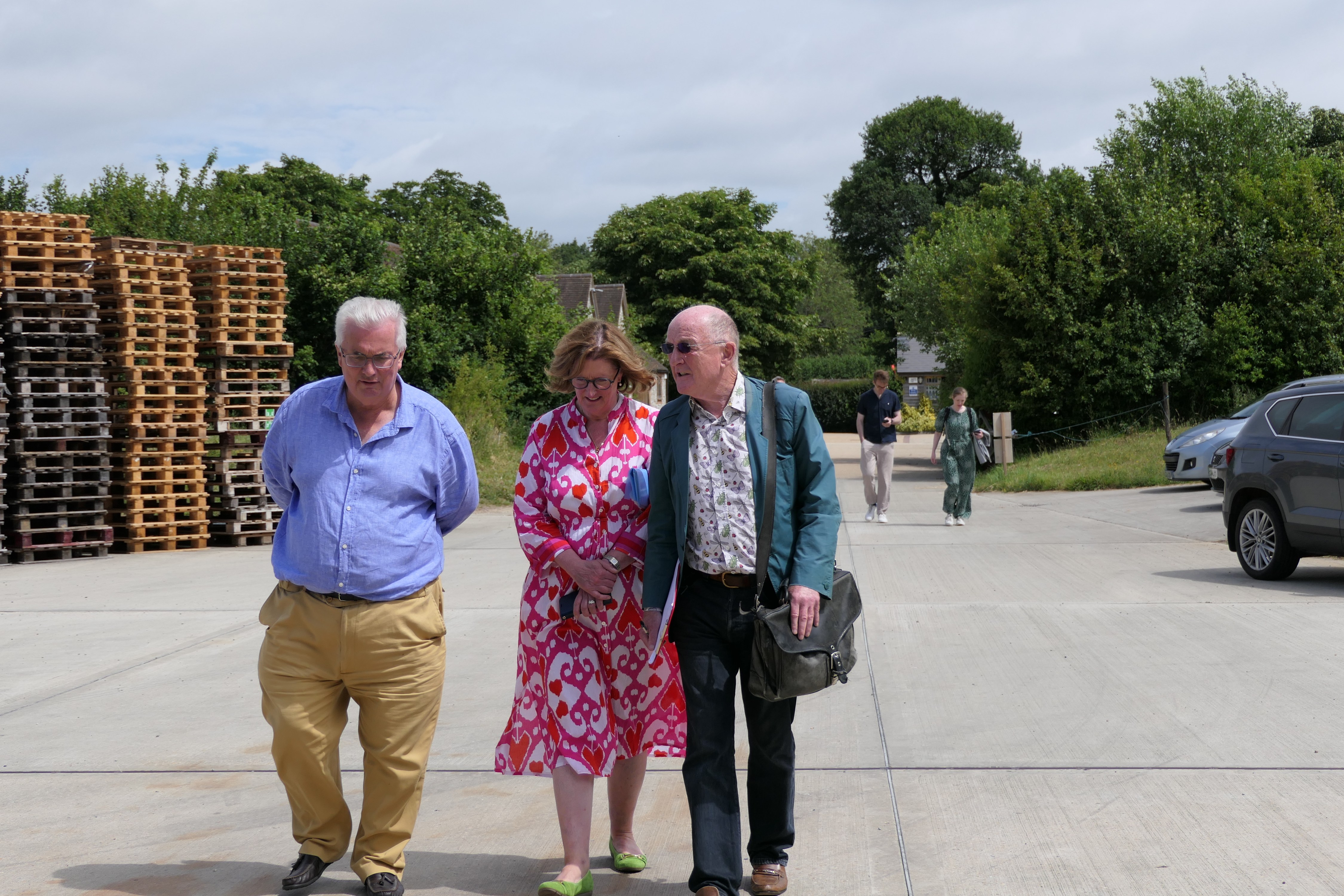
Simon, Julia Trustram Eve and Oz Clarke
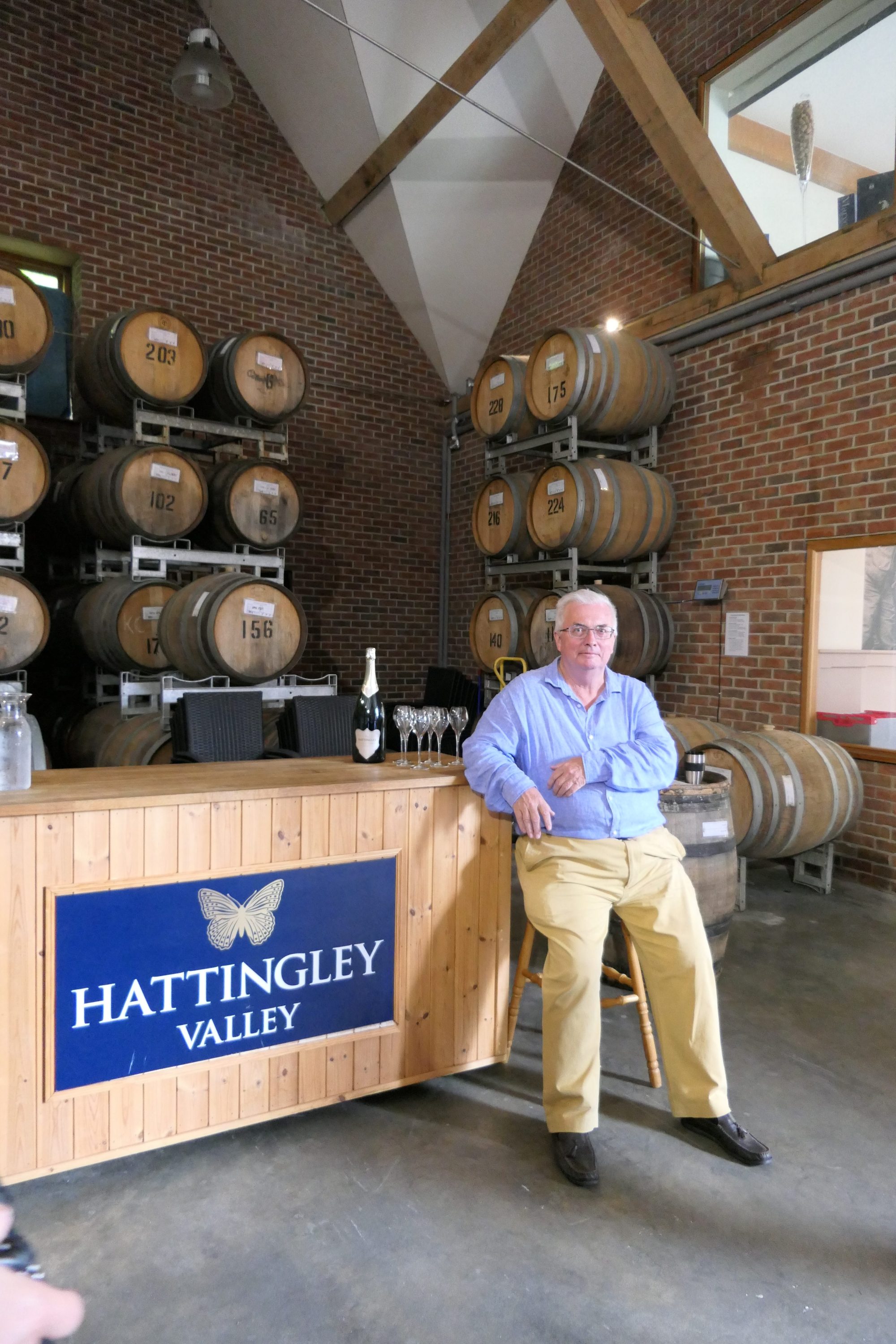
Simon Robinson

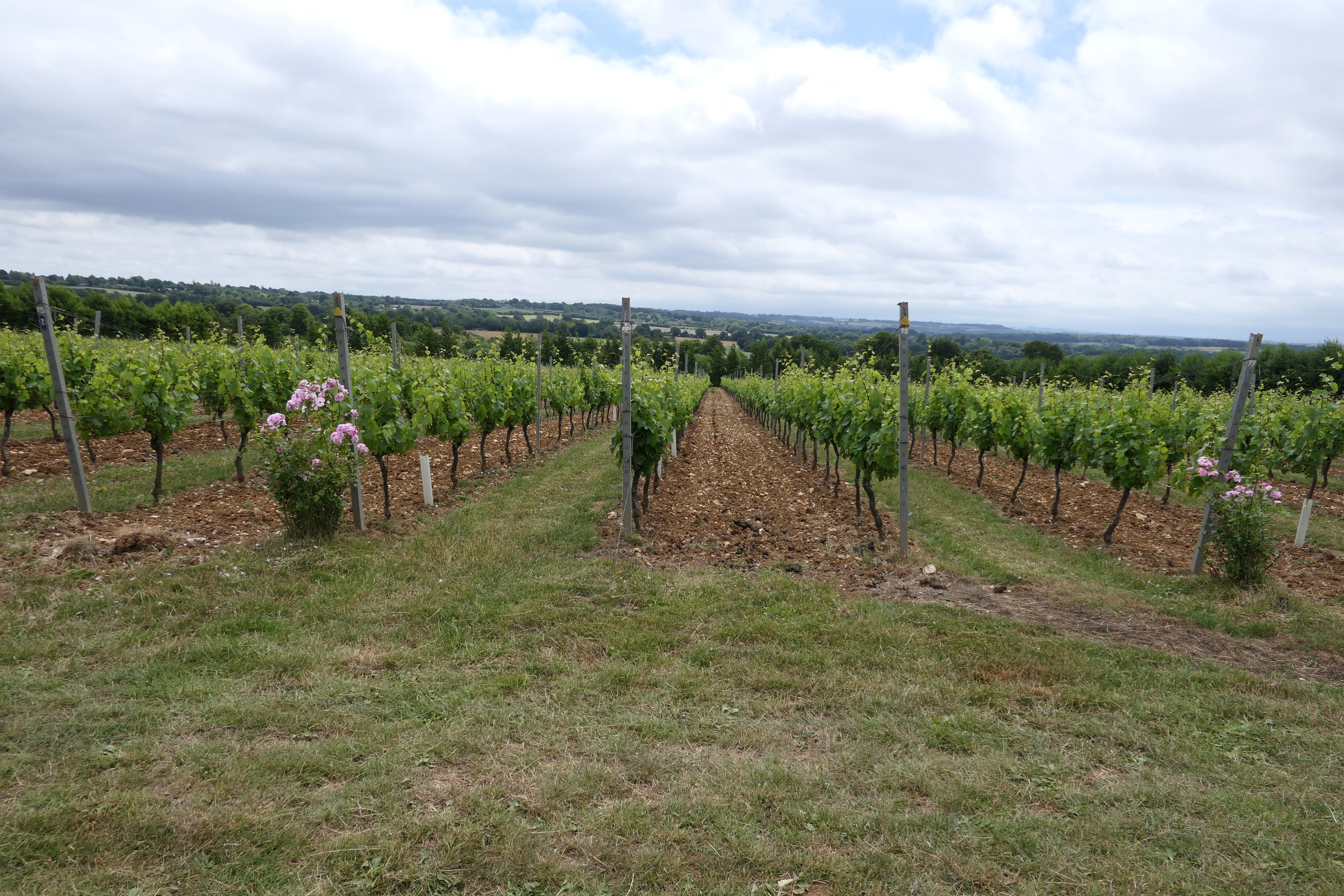
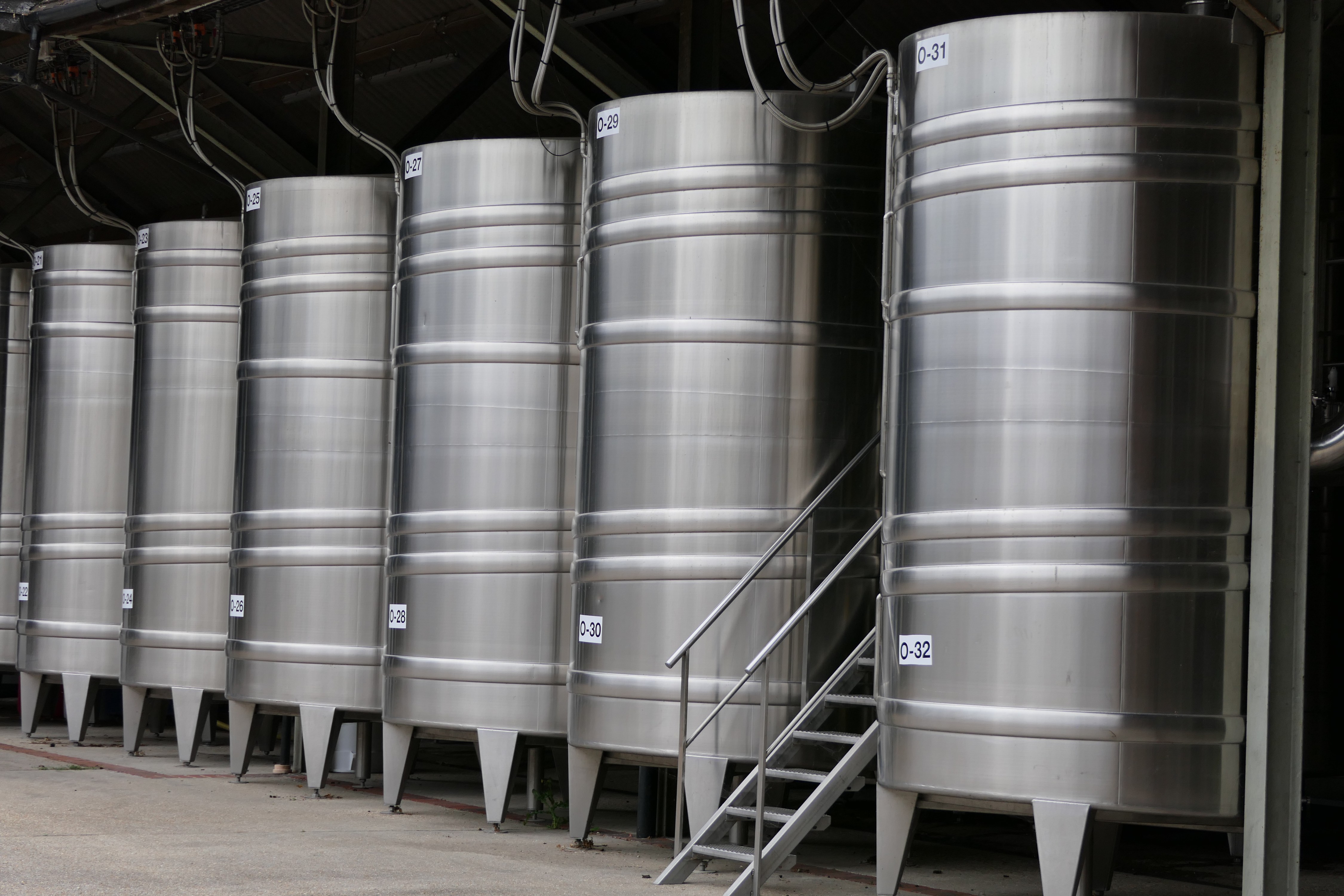

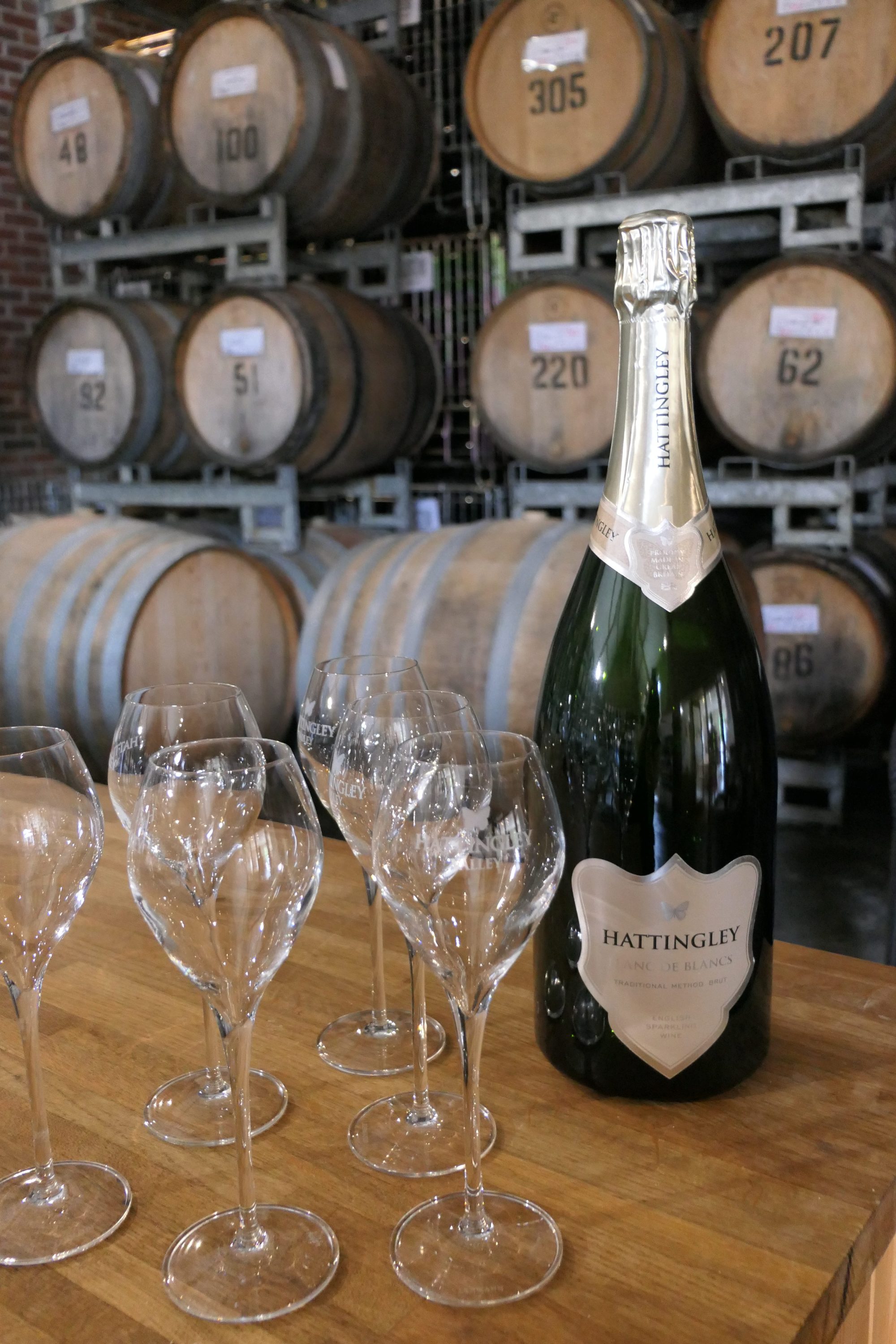
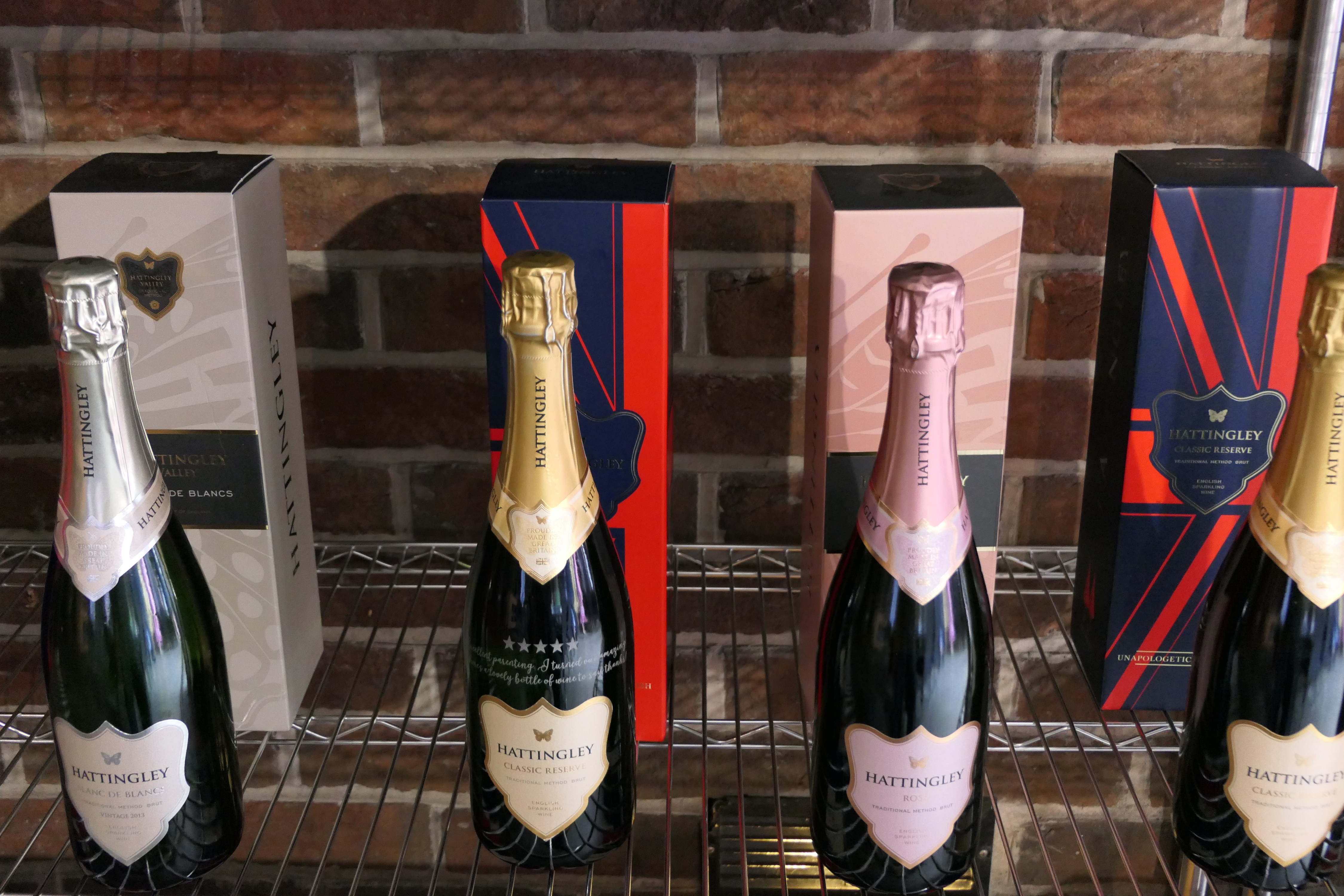
For more like this, sign up for the FREE Vineyard newsletter here and receive all the latest viticulture news, reviews and insight

